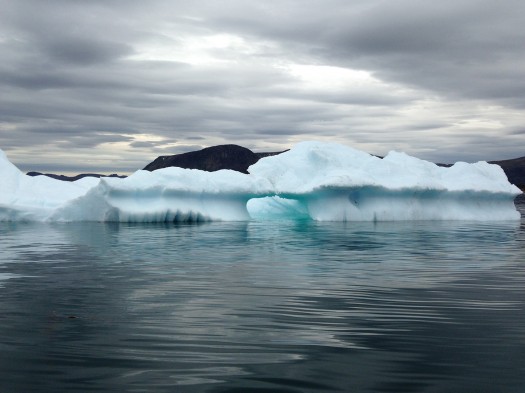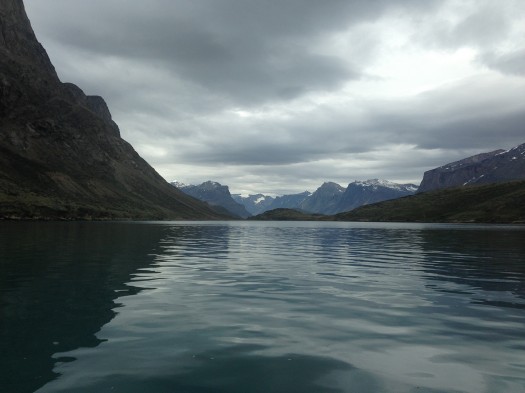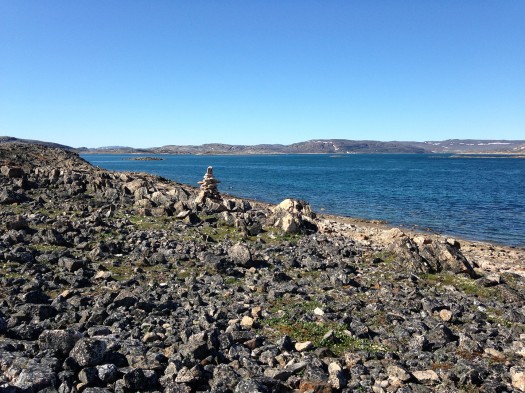A Placemaking Journal
The Inuit: A view from the top of the world
 Much of what we write about here on PlaceShakers has to do with dense urbanism and clustered rural development, as an alternative to auto-centric suburban development patterns that have dominated North America for the last 70 years. What we don’t talk about as much is that a big part of our raison d’etre is these compact patterns save our farmlands, rangelands, and wilderness from being gobbled up as quickly, and that walkable places reduce vehicle miles traveled and help with our global commons problem of climate change.
Much of what we write about here on PlaceShakers has to do with dense urbanism and clustered rural development, as an alternative to auto-centric suburban development patterns that have dominated North America for the last 70 years. What we don’t talk about as much is that a big part of our raison d’etre is these compact patterns save our farmlands, rangelands, and wilderness from being gobbled up as quickly, and that walkable places reduce vehicle miles traveled and help with our global commons problem of climate change.
For the rest of July, I intend to turn a focused eye on rural settlement patterns, environmental issues, and preservation, thanks to the Heart of the Arctic expedition I’m embarking on with my family this week. Follow my husband, Stephen Borys, for the cultural perspective, as the Director of the Winnipeg Art Gallery. The WAG holds in trust the world’s largest Inuit art collection and has plans underway for a new Inuit Art Centre.
We’ll be heading up to Baffin Island, stopping in communities in Nunavut and Nunavik in Canada, and along the western coast of Greenland, crossing the Arctic circle. While I will share with you insights and photographs from each port as the journey unfolds, today I’m enamored with the region and getting up to speed on its history.
“Small settlements dot the landscape, but the region remains one of the world’s last great wild places. Icebergs, the size of apartment buildings, float past the coastline. It is a big landscape – nature has the power to humble you here.” ~ The Arctic Expedition Guide by Adventure Canada
Inuit are the last remaining hunting culture in North America, deeply connected to wild animals for both sustenance and culture. Wild game, or “country food,” is often up to 70% of their diet, preferably eaten raw and warm to conserve food value and vitamin content. Inuit traditionally do not hunt for sport. From their perspective, if animals are abused, they make the hunting bad.
Inuit leader Sheila Watt-Cloutier provides much sage direction in her memoir, The Right to Be Cold. She speaks of recently past traditions, and talks of the hunters “spending hours, days in silence and stillness, disappearing into the landscape so that caribou or the seals might appear.” But that has changed during the last 40 years: “Poverty, dependency, coerced relocations, forced separation of families, the dog slaughter – the litany of historical traumas left many in our society angry and deeply troubled.” There is a return to old wisdom, thanks in part to the largest Aboriginal land claim settlement in Canadian history, the Nunavut Land Claim Agreement in 1993, that enables self-government.
Shelia Watt-Cloutier’s insights are pertinent to governance and placemaking, “Wisdom was forged through the independent judgement, initiative and skill required to live on the land and ice. The land was our teacher, and our hunters knew the value of patience and trust. Without them, they would perish.”
These nomadic people only committed to permanent settlements in the 20th century, under pressure from the federal government. Igloos and tents, with transportation by dog sled and boat, were their traditional way. In the two weeks ahead, we are likely to find more inspiration in the landscape and the stories of the people than we will in the development patterns themselves.
Having had the pleasure of seeing the exhibition, Arctic Adaptations: Nunavut at 15, at both the Venice Biennale and the Winnipeg Art Gallery, I can’t escape this statement from the project, which reverberates with much global placemaking work:
“Modernity is typically unconcerned with the specificities of place, or even the premise of ‘the local.’ The climate, geography, and people of the Canadian Arctic challenge the viability of a universalizing modernity. Following the age of exploration in the 20th century, modern architecture encroached on this remote and vast region of Canada. However, the Inuit have inhabited the Canadian Arctic for millennia as a traditionally semi-nomadic people. Inuit relations with Canada have been fraught with acts of neglect, resistance, and negotiation. Throughout the last 75 years, architecture, infrastructure, and settlements have been the tools for these acts. Some have described this rapid confrontation with modernity as a transition ‘from igloos to internet’ in 40 years. This abruptness has revealed powerful traits among its people—adaptation and resilience.”
Inuit are descendants of the Thule, a highly developed Arctic whaling culture, who crossed the Bering Strait from Siberia into North America around 1,000 BC.
In Canada, the Inuit live in four regions: Nunatsiavut (Labrador), Nunavik (Quebec), Nunavut, and Inuvialuit (Northwest Territories). Nunavut and Nunavik cover over a fifth of Canada, yet the entire population would barely fill a typical football stadium. About 30,000 people live in Nunavut and 12,000 in Nunavik, at a density of 23 square miles per person.
Roughly 200,000 Inuit – culturally similar indigenous peoples inhabiting the Arctic regions of Canada, United States, Denmark, and Russia – call the Circumpolar Region home, hailing from Yupigeet in Siberia, Inupiat in Alaska and the Western Canadian Arctic, Inuit of Canada, and Kalallit of Greenland.
Living in the coldest city of its size on earth, much of the Inuit teachings resonate deeply. Here in Winnipeg, walkable urbanism helps mitigate extreme environments, and helps us stay healthy and grounded. I’ve been grateful for the Inuit friends I’ve made here, including Fred Ford, the President of the Manitoba Inuit Association and Nikki Komaksiutiksak, a traditional Inuit throat singer from Rankin Inlet. As well as the Inuit who have passed through our city and changed us forever, like the singer and artist, Tanya Tagaq. Or the thought leaders who so kindly help us better understand the Circumpolar Region, such as WAG Curator of Inuit Art, Darlene Coward Wight, through her work preserving, promoting, and celebrating the work of Canadian Inuit artists and her ongoing encouragement to the rest of us to venture northward.“Inuit” translated literally means “the people.” I’m hoping in our trip north, and our view from the top of the world, that I’ll find insights from these resilient people for each of us in our changing global landscape. Along with the simple pleasures of exploration.
To read the entire Heart of the Arctic series, go here.
If PlaceShakers is our soapbox, our Facebook page is where we step down, grab a drink and enjoy a little conversation. Looking for a heads-up on the latest community-building news and perspective from around the web? Click through and “Like” us and we’ll keep you in the loop.






